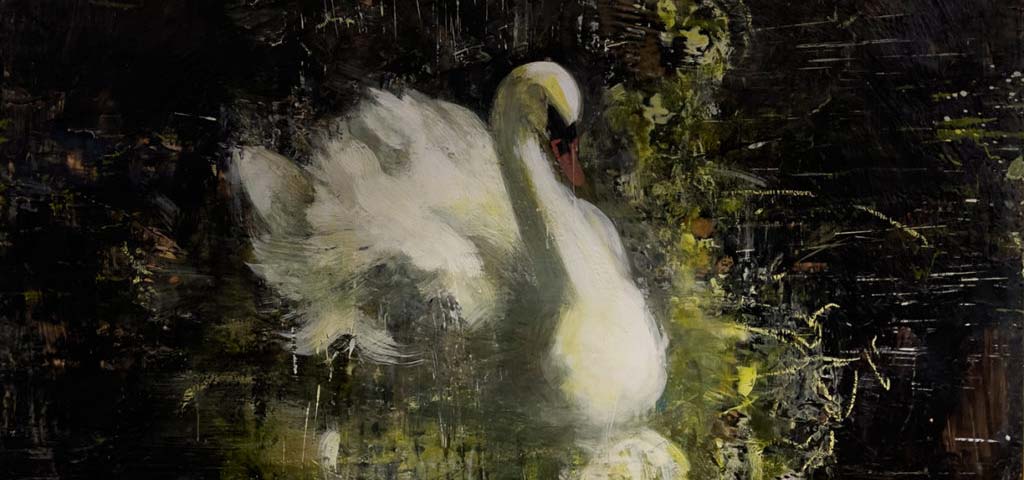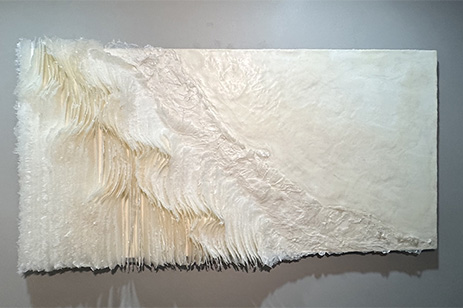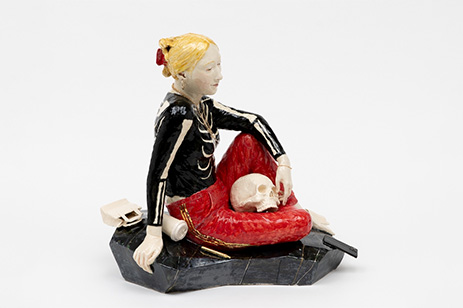Much of mythology is meant to warn mortals against their folly, however then as now, often the innocent are those weighted with what befalls them. Leda and the Swan is one of the best known tales in Greek and Roman mythology.
The god Jupiter/Zeus transforms himself into a swan and rapes or seduces Leda. In much of art history, this is depicted more as a seduction, softening the uncomfortable subject matter. The blame is placed on Leda and her ability to be fooled, rather than depicting her as the victim that she was. In Tony Scherman’s exhibition, The Rape of Leda, Scherman confronts and names the act, forcing us to consider it. We do not see the interaction between the two, rather the approaching god and the cast of silent onlookers (Venus, Persephone, Diana as a stag, Cerberus and others). As in life, bystanders bear witness and cannot find their voices to protest, or at times do not care to. Scherman’s flowers act as symbols of the empathy and protection Leda deserved and was unable to find.
Tony Scherman was born in Toronto, Canada in 1950. He received his MA from the Royal College of Art in London in 1974. Over his nearly fifty-year career, he has exhibited in dozens of solo exhibitions in North America, Europe, and Asia. Selected group exhibitions include those at the Cleveland Museum of Art, Minneapolis Institute of Arts, and several Canadian museums. His work is held in dozens of public and private collections in North America and Europe such as the Centre Georges Pompidou, Los Angeles County Museum, The Denver Art Museum, The High Museum, the Musée de l’Art Contermporain in Montréal and The Art Gallery of Ontario in Toronto.. He has been featured in The New York Times, Art in America, Art Papers, Art Press, and American Art Collector.




